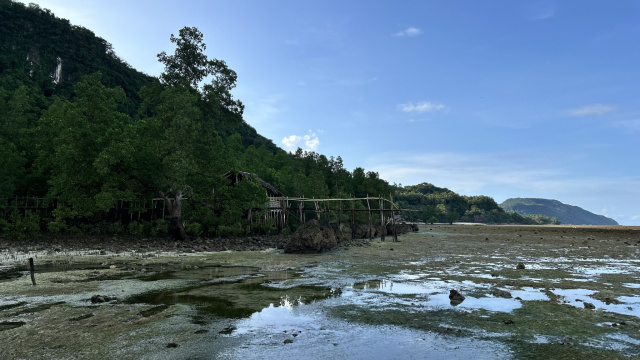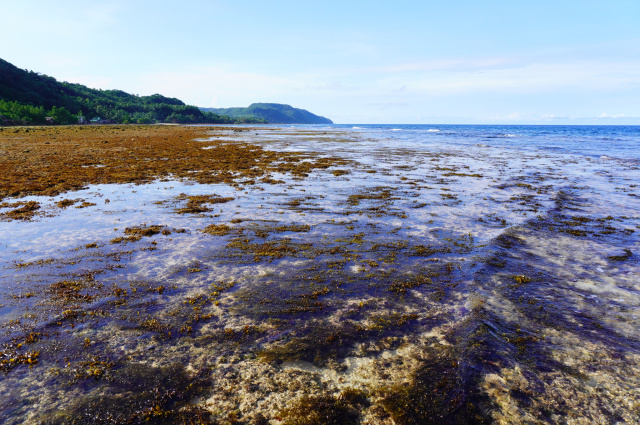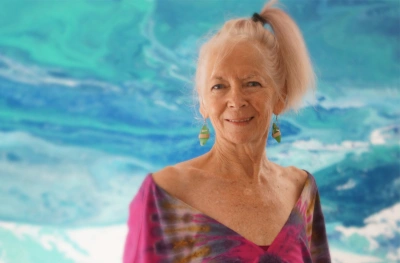Since moving to the Philippines and residing on Panay Island, I have observed striking similarities between the tidal flats of both Australia and the Philippines in terms of their ecological significance, biodiversity, and role in coastal communities. These intertidal zones, found along estuaries, bays, and mangrove forests, support rich marine life, provide feeding grounds for migratory birds, and serve as vital fishing areas for local communities.
Tidal flats, as vividly described by Rachel Carson in The Edge of the Sea, are dynamic coastal landscapes shaped by the ebb and flow of the tides. These exposed sand and mudflats are rich ecosystems, home to burrowing mollusks, tiny crustaceans, and migratory shorebirds that rely on their shifting terrain for survival.
Carson captures the intricate balance of life in these intertidal zones, where adaptation is key to thriving in an ever-changing environment.

In Buruanga, Aklan, I have personally experienced the beauty of tidal flats along its coastline. During low tide, vast stretches of seabed emerge, revealing hidden marine life—starfish scattered across the wet sand, small crabs scuttling into burrows, and local gleaners collecting shellfish. The sight of herons patiently wading through the shallows and children playing in tide pools embodies the deep connection between the community and the sea. Carson’s reflections resonate deeply, emphasizing the need to protect these fragile coastal environments.
On sunny mornings, the vast seascape comes alive with people combing the shores—children running with their dogs while keeping an eye out for shellfish, elderly women walking in stride with their grandchildren eager to learn the trade. On overcast days, the scene shifts into what feels like a grayscale, silent film—people moving slowly and deliberately, with only the distant crash of waves breaking the stillness. These tidal flats, ever-changing yet deeply rooted in the rhythms of daily life, remind me of the delicate balance between nature and community, and the importance of preserving both.
With the ever-changing climate, there is an urgent need to safeguard these coastal fringes and ensure sustainable livelihoods to preserve the beauty and abundance of these ecological wonders.


Elle Lorraine Wood
Since moving to the Philippines and residing on Panay Island, I have observed striking similarities between the tidal flats of both Australia and the Philippines in terms of their ecological significance, biodiversity, and role in coastal communities. These intertidal zones, found along estuaries, bays, and mangrove forests, support rich marine life, provide feeding grounds for migratory birds, and serve as vital fishing areas for local communities.
Tidal flats, as vividly described by Rachel Carson in The Edge of the Sea, are dynamic coastal landscapes shaped by the ebb and flow of the tides. These exposed sand and mudflats are rich ecosystems, home to burrowing mollusks, tiny crustaceans, and migratory shorebirds that rely on their shifting terrain for survival.
Carson captures the intricate balance of life in these intertidal zones, where adaptation is key to thriving in an ever-changing environment.

In Buruanga, Aklan, I have personally experienced the beauty of tidal flats along its coastline. During low tide, vast stretches of seabed emerge, revealing hidden marine life—starfish scattered across the wet sand, small crabs scuttling into burrows, and local gleaners collecting shellfish. The sight of herons patiently wading through the shallows and children playing in tide pools embodies the deep connection between the community and the sea. Carson’s reflections resonate deeply, emphasizing the need to protect these fragile coastal environments.
On sunny mornings, the vast seascape comes alive with people combing the shores—children running with their dogs while keeping an eye out for shellfish, elderly women walking in stride with their grandchildren eager to learn the trade. On overcast days, the scene shifts into what feels like a grayscale, silent film—people moving slowly and deliberately, with only the distant crash of waves breaking the stillness. These tidal flats, ever-changing yet deeply rooted in the rhythms of daily life, remind me of the delicate balance between nature and community, and the importance of preserving both.
With the ever-changing climate, there is an urgent need to safeguard these coastal fringes and ensure sustainable livelihoods to preserve the beauty and abundance of these ecological wonders.

You might like...

Caves and Falls around Panay Peninsula

Paene Insula: The Northwest Panay Peninsula Mountain Range

From hunter, to guardian: the inspiring journey of Benjamin Tacud and the fight to save the dulungan

Poetry: Wild (Tumawog Falls)
Newsletter
Sign up to keep in touch with articles, updates, events or news from Kuno, your platform for nature
